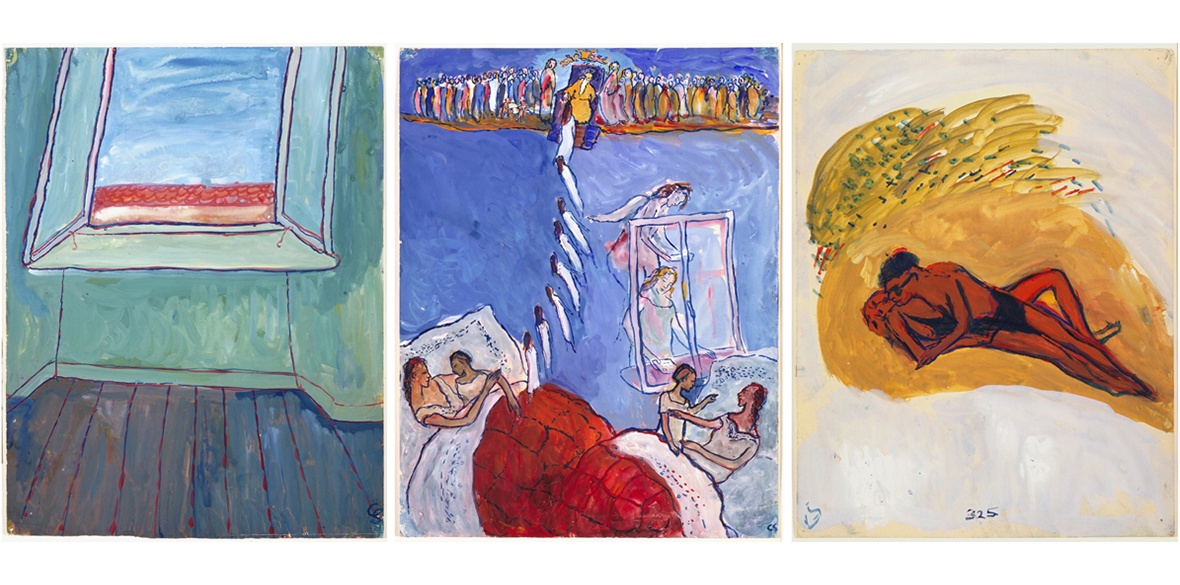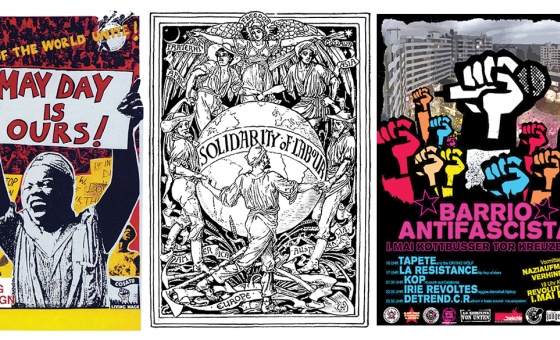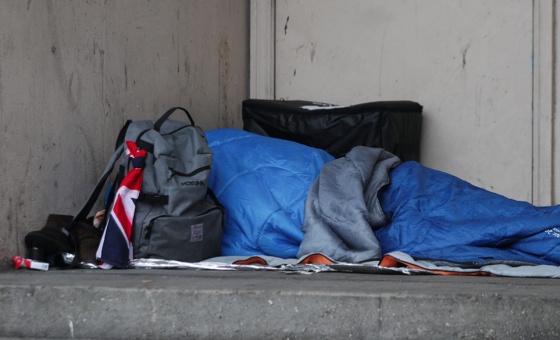This is the last article you can read this month
You can read more article this month
You can read more articles this month
Sorry your limit is up for this month
Reset on:
Please help support the Morning Star by subscribing here
Charlotte Salomon: Life? or Theatre?
Jewish Museum London
AMID a blaze of red and orange brushstrokes, a lone, bare-footed figure sits before an open window, clutching her head in her hands.
One foot is stuck out against the gaping emptiness beyond the windowsill and a large paint board balances in her lap, its heft weighing her down, preventing her from flying through the window into the red wash.
Running down the centre of the canvas in vermilion capital letters are the words: “Lieber Gott, lass mich bloss nicht wahnsinnig werden” (“Dear God, only please don’t let me go mad.”)
“Nicht,” written in black, appears tacked into the sentence, completing the image like the final resolution of a mind in turmoil.
A self-reflexive portrait of the artist coming to terms with her grandmother’s decision to end her life by jumping through a window, it’s one of the most powerful paintings displayed in this exhibition.
In the picture, as in all of Salomon’s work, a reckoning happens through the act of painting memory and, as she grapples with the seduction of death that claimed the lives of nearly all of her female relatives, it is the paint board that ultimately gets in the way.
“My life began when my grandmother decided to take hers,” she wrote in a 1941 letter to her father “...and then I felt the same inclination deep inside of me, craving for despair and death.”
But the process of documenting her family’s jostling narratives dealing with suicide gave birth to a Charlotte able and determined to live.
The artist was 22 when her grandmother killed herself. At the time, she was living as a refugee from nazism in Villefranche sur Mer in France, where she learnt from her grandfather of seven other family suicides, including that of her mother, whom she had always been told had succumbed to a bout of influenza.
On the brink of a nervous breakdown, she found herself in the home of US friend Ottilie Moore. Haunted by the women in her family and forced to care for her brutish grandfather, who taunted her as the inevitable heir of this terrible legacy, she arrived at a choice: whether to take her own life or to embark on “something utterly mad.”
A century after her death, it would come to define her as one of the most enigmatic artists of our time.
The “act of madness” turned out to be Leben? Oder Theater? (Life? or Theatre?), a dramatised fictional memoir composed of 769 images in gouache divided into prologue, main section and epilogue.
The massive artwork comes together as a “singspiel” — a tricolour operetta in gouache which layers music, text and images in an osmotic blend of the facts and fictions of her family’s story from World War I up to the day in 1941 when she decided that she would “live for them all” and “learn to travel all their paths and become all of them.”
The work begins with the suicides of her aunt and later her mother, who promises to send letters from heaven before ascending to the top of the canvas in a swirl of milky indigo.
The body of the collection deals with her father’s second marriage to the enchanting Paula Lindberg-Salomon and Charlotte’s own obsessive infatuation with the traumatised World War I veteran Alfred Wolfsohn, a singing teacher and philosopher, who is named in her dramatis personae as Amadeus Daberlohn — “Penniless Mozart.”
Wolfsohn’s doppelganger appears just under 3,000 times, sometimes in delicately rendered portraiture, at other times just as a series of horizontal strokes across a page. He's propped up on an elbow above threads of text detailing his dissertations on Socrates, Tolstoy, Jesus Christ and Helen of Troy.
In a private postscript, composed towards the end of the painting process, Salomon meditates on the right to die, though the project is a fierce rebuttal against the fate of her matrilineage and of the ravages of suicide among Jewish women during the years of the Weimar republic.
In collaboration with the Jewish Historical Museum in Amsterdam, curator Dominik Czechowski brings together 236 gouaches from the celebrated work for the exhibition, including 50 pieces not previously seen in Britain.
The exquisite selection reflects the spirit of the work in its entirety, highlighting the most important moments of Salomon’s memoir as well as the most exciting expressions of her artistic ingenuity and lyricism.
Displayed in simple glass casings above accompanying text, the paintings are organised according to Salomon’s own numbered sequence, allowing us to appreciate the trajectory of her authorship from vivid, cinematic detail to the abstract impressions of her later work. It is an expeditious evolution that was completed just a year before she was shipped to Auschwitz.
“She was almost a proto-feminist”, says Czechowski with a nod to the image of young Charlotte contemplating the open window, that death canal which framed so much of her darkest inquiry. “She always knew she was painting on borrowed time.”
Indeed, a year and a half seems an impossibly short time to conceive and execute such a magnum opus, but perhaps in light of that, says the curator, “you feel a sense of urgency in every canvas.”
Salomon’s painting eludes all familiar categorisation. There are the dark, liquid silhouettes inspired by Munch and the silky curves and colours of the Romantics, along with the stark planes and vivid primaries of Modernism and one image of her mother’s crumpled body is delivered in the bright impressionistic stipplings of Van Gogh’s sunflowers.
She cannot — and according to Czechowski, should not — be categorised as a Holocaust artist, that easy supposition which denies the deeply personal investigation of violent secrets that nobody shared against a background of brutality that everybody did.
“I don’t think there will ever be a time when this work is not relevant,” shrugs Czechowski. “Long before the age of MeToo, we see a young woman tackling issues of exile, of othering, of migrant bodies, and here she is, exercising her own expression of ‘my body, my choice’.”
On one level, Leben? Oder Theater? is a work of enormous ambition that demands deep and extensive analysis. On another, it is simply a courageous coming-of-age story about a woman who, despite the odds, chose to live.
The exhibition runs until March 1 next year, opening times: jewishmuseum.org.uk











